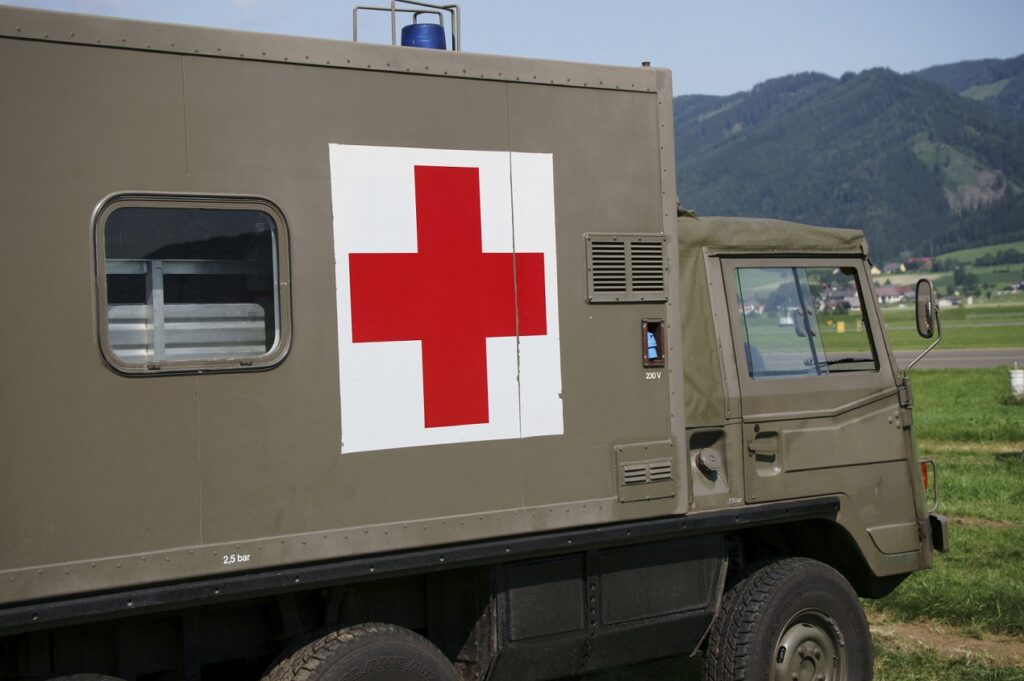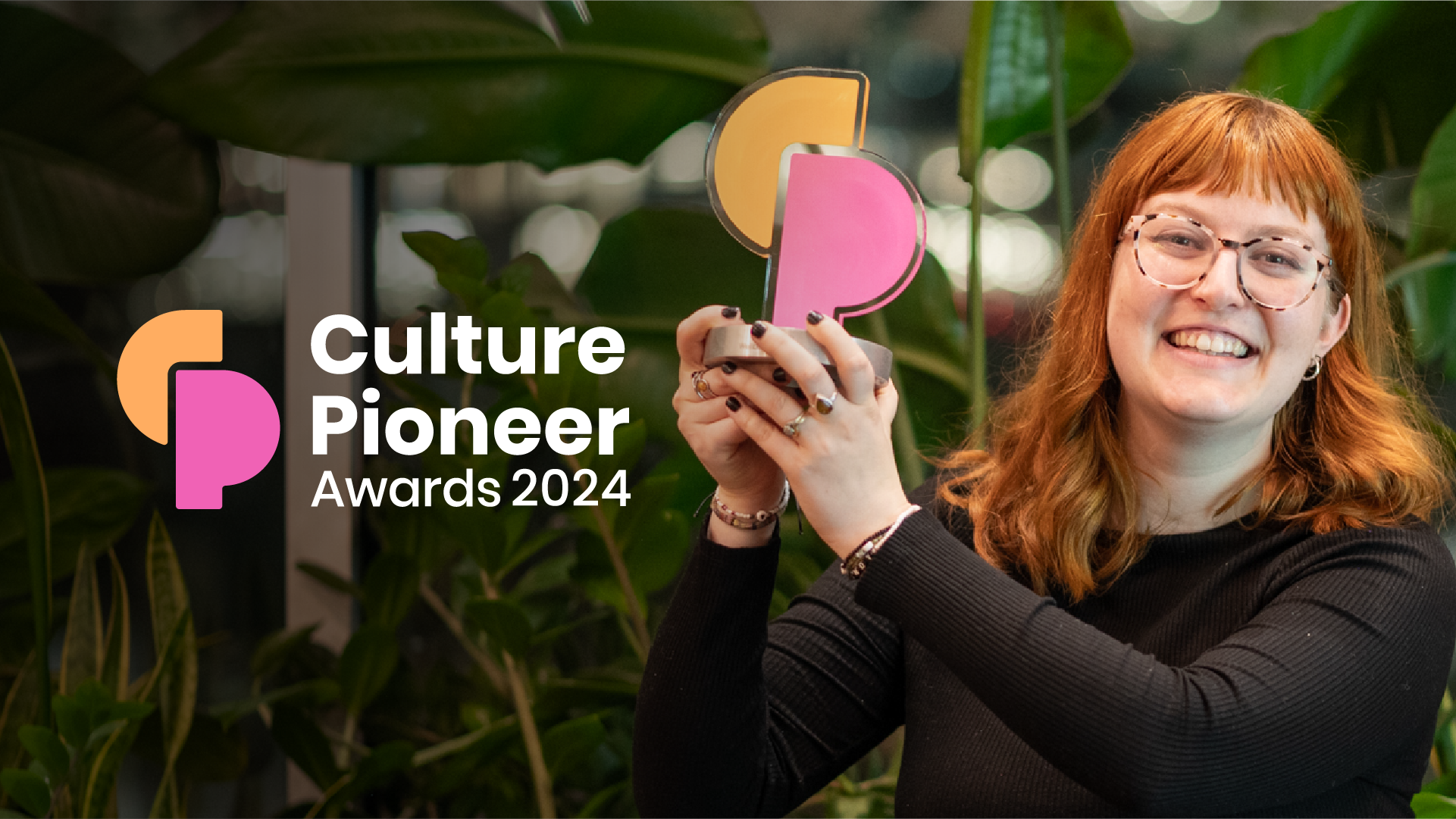The International Federation of Red Cross and Red Crescent Societies won our ‘International Project of the Year’ award at this year’s Employee Engagement Awards for a fascinating initiative called Random Coffee Trials (RCTs) which aim to create a sense of unity and cohesion across global boundaries. RCTs introduced volunteers and staff to a new colleague from a different country each month for a video chat to talk about their work with the IFRC. We caught up with Shaun Hazeldine, Senior Officer at the IFRC, and Michael Soto, from Spark Collaboration, who provided the technology behind the initiative.
Q: If you had to pick one reason why you think you won the award, what do you think it was?
Michael Soto (MS) – I think the simplicity and the scale of the Randomised Coffee Trials (RCT) initiative was key. The way it was able to bring in people from all across the world – people were able to talk to other people from far away countries which they normally would not have an opportunity to talk to. It was a straight-forward simple initiative which had quite a significant scale.
Shaun Hazeldine (SH) First of all, it was an extremely simple idea, which are often the best. Also the scale and diversity of it. Over 80 countries participated. We have a total of 189 countries in the organisation and to get 80 to participate so quickly was a really good win.
We were also able to demonstrate some effectiveness out of it as well. There were a couple of filters we were looking at. Firstly, a sense of pride in the organisation. When people are connected to others working in other countries and are hearing about the work that is going on around the world they are able to feel part of something bigger.
The other filter was connectivity. In a lot of our studies we found that most of the people volunteering or working in the organisation had little or no connection with anyone outside of their own country in the organisation. We saw that although it was just a simple matching and Skype conversation around a third of people indicated they had subsequent contact with the person they had been matched with.
The third area is that it had direct outcomes on our work. People were able to point to how the connections had helped them develop certain areas of their work and their own contacts and they were able to give concrete examples of that.
We were very pleased with it. Not least for the fact that it was an inexpensive strategy to run, particularly with the support of Spark Collaboration.
(MS) It wasn’t just people outside of the country- in some cases people in the same country were matched together.
(SH) Yes, there was an example of a person who worked in Switzerland who was matched with someone just three doors down from them in the same corridor. Before being matched they had never spoken before! It’s not just someone in Iceland talking to someone in Fuji!
Q: The core goal of your engagement strategy was fostering a sense of unity and shared vision by connecting geographically-dispersed workers. Why is this so important to engagement?
(SH) There were two main goals. The first was fostering a sense of unity and the second was about trying to better engage the knowledge network. Helping people to learn from each other and to open up learning networks for themselves in a non-confrontational and non-structured way. Although it’s very informal and random, we have seen that people were still able to consistently get learning experiences from being matched with people.
On the engagement side, people who work here are motivated by the cause.
On the engagement side, people who work here are motivated by the cause. There is an emotional connection to the organisation and what the organisation stands for, but they very rarely get a tangible sense of that outside their own country. To be able to give them a very direct experience through a conversation with someone working in another country turned out to be a very emotional and powerful experience. We saw very emphatic feedback – for example, they were moved to hear about the work happening in Bangladesh or in Sierra Leone and how that helped them feel part of a global movement.
This is really important for us – trying to foster and encourage a sense of pride and overall unity in the organisation is some of what draws volunteers and staff to the organisation.
(MS) In the award submission, one of the clear goals was around learning and development. The unity and the better engagement of the learning network go hand-in-hand. The very construction of that community facilitates the transfer of the knowledge and the information about what’s going on.
In general, it’s more difficult for people in larger organisations to feel the same way as they would in a smaller organisation where you have a more personal and emotional connection.
In larger organisations it can be hard to get an overall sense of what the mission is and how what I’m doing fits in with the rest of the organisation. That can have a negative effect on driving inspiration. A fundamental challenge large organisations face is if people feel they are working on this small thing and don’t see how that helps or drives success in the organisation.
Sharing best practice across teams in different geographies is perhaps part of the knowledge network leveraging aspect, but I think it also serves to form a sense of unity- we’re in this together, let’s learn from each other and let’s see how we can tackle problems in new and innovative ways.
Being geographically dispersed is both a tremendous opportunity and a tremendous challenge.
(MS) Being geographically dispersed is both a tremendous opportunity and a tremendous challenge. As you get more dispersed it’s much harder to get a sense of unity and a transfer of knowledge and expertise with people spread across the globe. At the same time you are able to develop diverse perspectives, diverse experiences which generate new ideas about how to solve problems.
(SH) There was a good story about a connection that was made between a person working in Austria and a person working in Bangladesh. They were both working on disaster risk reduction activity. The person in Austria, as part of their programme, had school-based education initiatives and in the region in Bangladesh where the other person was working they were not doing that as they felt some of the elements were too technical for school. As a result of the connection and the conversation they realised that they would be able to adapt their programme to be school-based.
As another example, two IT professionals were connected. One a very senior IT professional, and the other a junior IT professional in a small national society in the Caribbean. That connection led to multiple conversations, support and mentoring around how to develop the IT systems in a small national society.
(MS) In some sense that is the objective. If every conversation was one-off and no one had any further conversations the programme would have less impact. It’s still a very useful experience through the sharing and the insight, but the hope is that through having a monthly meeting with a colleague from a different part of the organisation there is some benefit, either directly through the people who are paired together or a benefit one degree removed.
For example, this month I might meet with Shaun and we may not have something to work on directly together but through better understanding of what Shaun is doing when I’m next talking to Matthew perhaps I will say: ”Matthew, you should talk to Shaun – you’re working on the same thing”.
The objective is to make the network more cohesive and allow the information to flow.
Looking at it from a network perspective, the objective is to make the network more cohesive and allow the information to flow, not only through the people who are paired, but also through the respective networks of the people who are paired.
Q: You say you took a ‘people-first’ approach to the technology platform you implemented to connect people. What do you mean by this and what lessons should other organisations take from this?
(MS) The initiative was about bringing people together. It’s a focus on human-to-human and not using technology for technology’s sake. A lot of social media is often about first bringing people to the technology and the technology being at the centre of everything and all conversations take place on a platform. Whilst technology was an important part of the initiative, our focus was on bringing people together first and then trying to make the technology as something which was in the background.
The introductions were made via email and then people figured out what the best way would be for them to speak, such as Skype, Hangout etc. The two people paired in Switzerland who worked down the corridor from each other simply met for a coffee.
(SH) When we first started the initiative we had small numbers of participants and so it was easy to manage, but as the numbers started to increase from 40 to 50 to 200+ it started to become harder to manage and was very time consuming.
We are always really hesitant to drive people to a new platform because it’s very difficult to get people to do that. If we were going to do that we needed something that was going to work for them, that was simple and was an easy way to connect people. That’s what we’ve been able to do with Spark – a straight-forward non-intrusive platform which they can control their engagement with and is really just about getting them together.
I would also support what Michael was saying about the face-to-face element. We had an interesting story of a director of a region in The Americas who was connected with a volunteer in Colombia and the volunteer did not realise they had been connected with a director. They had very good conversations and eventually the director came to the country and they met in person. As in all industries or sectors it can be easy to get disconnected from what is happening on the ground and this provides a simple way to reconnect – it gives you good scope across different levels and different geographies in the organisation.
It’s useful to think about the culture and the behaviour of the people within the organisation and to try to develop an initiative which fits in with what people are already doing.
(MS) It’s useful to think about the culture and the behaviour of the people within the organisation and to try to develop an initiative which fits in with what people are already doing. With any change initiative, yes you want to change some things about behaviour, but you want to focus on the changes which can give you the most impact and minimise the ones which are more about the needs from the technology platform perspective.
The process is structured in a way that once people register they are registering for a series of future interactions. Each month they will receive an email in their inbox with an introduction to someone new and they know that the other person has received the same email introduction. It only takes one initial step to get the ball rolling.
(SH) In terms of understanding the metrics, we encourage people to write to us and tell us how it’s going. We did two evaluations early on where we asked for email feedback to see whether people were enjoying it. We then did a more formally structured survey and we had a good response rate of around a third of the participants responding to the survey. In my role I travel a lot and so in every office I visit I hear from people who are taking part. If people are having difficulties with it they tend to write to us, so we find out about challenges pretty quickly. Typically the biggest challenge for people is writing someone an email they have been paired with and not getting a response back from them. Due to the nature of the work here people can often be travelling in remote areas and therefore not available.
Q: How do you ensure that you keep momentum going in your engagement strategy?
(SH) Our engagement strategy is broader than the RCT initiative, but for the purposes of the question I’ll just speak about the RCT initiative. We will post success stories where people have met and achieved wonderful things. We’ve produced an internal promotional video which has picked up 6,000 views.
We do periodic reminders but a lot of it tends to be word of mouth. What happens is that somebody finds out about the initiative and they are in a position to influence in the national society and so will become a real champion for it and they will promote it and we will then see a burst of registrations from that country.
We didn’t formally target a local champion approach, it just sort of happens. Some people will think it’s a tremendous idea and so spread it out widely in their networks. It seems to have its own life, it continues to grow on a monthly basis, but I am still trying to find new ways to communicate it into the network because as you know it’s an extraordinarily big network.
Keep it people-centred, put the fewest obstacles in their way to make the connections and keep it simple.
Q: For organisations starting on their engagement journey, what are your key tips for success?
(MS) Keep it people-centred, put the fewest obstacles in their way to make the connections and keep it simple.
(SH) There has to be something in it for people. Most people are very busy and they won’t engage with something unless they are going to get something out of it. It has to deliver something useful for people. This was part of a broader strategy of moving away from the head office telling people how they should be doing things, or the head office being a central repository of learning where you would collect all the good experiences and best practices and then disseminate it out from the head office, and instead a shift towards finding easier and more effective ways to connect the networks so they can learn from each other without having the head office in the centre of it. It’s about connecting people, then letting it happen and getting out of the way.
The other core principle we follow is to make it easy for them. We did an initiative a couple of months ago called “A day in the life” where we asked volunteers to post photos to our Facebook group about what they were doing that day and the idea was to show how much was happening around the world on just one day.
On that one day we got 3,000 photos from 110 countries and the Facebook group received some 6,000 new members in that week alone. The group has 25,000 members in it now. That was hugely successful, in part because most people are already on Facebook, and so they didn’t need to remember a new password or learn a new skill – the barrier to entry was low but it also delivered something for them. It was inspiring for them to see what was happening around the world, it helped them learn and helped them feel a sense of unity and connection.
Q: What’s next for employee engagement at the Red Cross? How do you take this forward even further?
(SH) In terms of the RCT initiative, Michael and I are always talking about what we can do next. We have thought about encouraging particular interests, for example, if you work in disaster relief or in emergency health responses then you could form your own groups and would be matched with people who work in the same area but are in different countries. We have encouraged national societies to establish their own RCT initiative with their own organisations. We have had four societies do that recently. At a national level they have similar challenges as ourselves in terms of connectivity and engagement.
I would like to drive the collaborative approach deeper. We are looking to launch a month that we will be calling ‘Volunteer Out Loud’ which will encourage people to share some of their experiences with volunteering but also some of their successes they have been having, some of the new approaches they have been trying and to share those with a little bit more detail than just photo sharing.
If you live, for example, in America or in Western Europe you often have quite a vibrant sector within your country but that’s not always the case in developing countries. Being able to connect and learn from others is an extraordinarily useful experience for people who are often looking for that practical guidance about different things which could be done.
Sometimes it runs the other way too – it’s not just the global north teaching the global south, it’s very much an exchange and people learning from each other. It can also be very aspirational as well when people connect with others further up the ladder in the organisation and in the RCT initiative we have seen at times unstructured mentoring relationships develop.
We have a lot of ideas for the future but you do have to time the initiatives you introduce. You can’t fatigue people.
We have a lot of ideas for the future but you do have to time the initiatives you introduce. You can’t fatigue people. They need to be able to find time in their day to engage with us so we do have to be careful about how we phase these things in.
I think the work we have undertaken with Spark Collaboration is a very good example of a partnership model. We are two disparate organisations in entirely different sectors who had no relationship previously. It’s a very good example of two organisations coming together and brainstorming a way to do this and then actually doing it.
(MS) In many ways the partnership is an illustration of what can come from unexpected conversations. I wrote an article in 2013 about Randomised Coffee Trials, which was an initiative we did at Nesta, and Shaun heard about it and we started talking and we then starting working together. It was a serendipitous set of events, which in many ways mirrors the experience the volunteers are now having through the RCT initiative.









